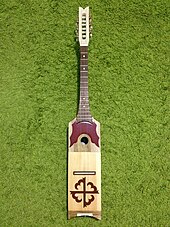Wainachen

Wainachen (Russian вайна́хи, вейна́хи, Chechen вай нах, Ingush вей нах - "our people"; transliteration according to ISO 9: Vajnah, Vajnahen) is an endonym of Chechens and Ingush that originated in the 20th century. In modern science of the Caucasus , this is understood to mean most of the carriers of the Nakh languages : the Vainachians of Chechnya and Ingushetia . Furthermore, the researchers use “Wainachen” to refer to the historical (medieval) ancestors of the Chechens and Ingush; H. all local ethnic-territorial associations- "societies" that formed these two peoples, and two tribal communities - the Akkinen (self-designation "akkij", Russian аккий ) and Karabulaken / Orstchojen (self-designation "orstchoj", рус. орстхой ), which in the ethnogenesis of modern Chechens and Ingush also played a role.
Sometimes ethnologists use the term "Wainachen" / "Wejnachen" as a synonym for the artificially created term "Nakh peoples". Since the 1970s, however, at least in the linguistic sense, the term “Vainach peoples” only includes Chechens and Ingush and the Batsen / Batsbien / Tsova-Tushen , the speakers of the Batsi language in northeastern Georgia (self-designation Batsbi, Russian . бацби) to exclude.
The ethnic endonym Wainachen / Wejnachen was brought into scientific circulation by linguists. Nowadays the name Wainachen / Wejnachen is widespread among representatives of these peoples, especially in communication between Chechens and Ingush. It also happens that representatives of some other ethnic groups (e.g. Akkinen, Orstchojen, Melchistinen, etc.) identify themselves not only through the designation of their own ethnic group, but also through the common ethnonym Wainachen.
The world of the Wainaks, their traditional society and their religion at the Ingush and Chechen level represent a separate research topic. At general schools in Chechnya, "ethics of the Wainaks" is taught as a school subject.
Web links
Individual evidence
- ↑ В. А. Шнирельман: Быть аланами. Интеллектуалы и политика на Северном Кавказе в XX веке. Новое литературное обозрение, Москва 2016, p. 279 .
- ^ Christian Paul Osthold: Politics and Religion in North Caucasus. The relationship between Islam and resistance using the example of Chechens and Ingush (1757–1961) . Dr. Ludwig Reichert Verlag, Wiesbaden 2019, ISBN 978-3-95490-397-9 , pp. 82-129 .

